
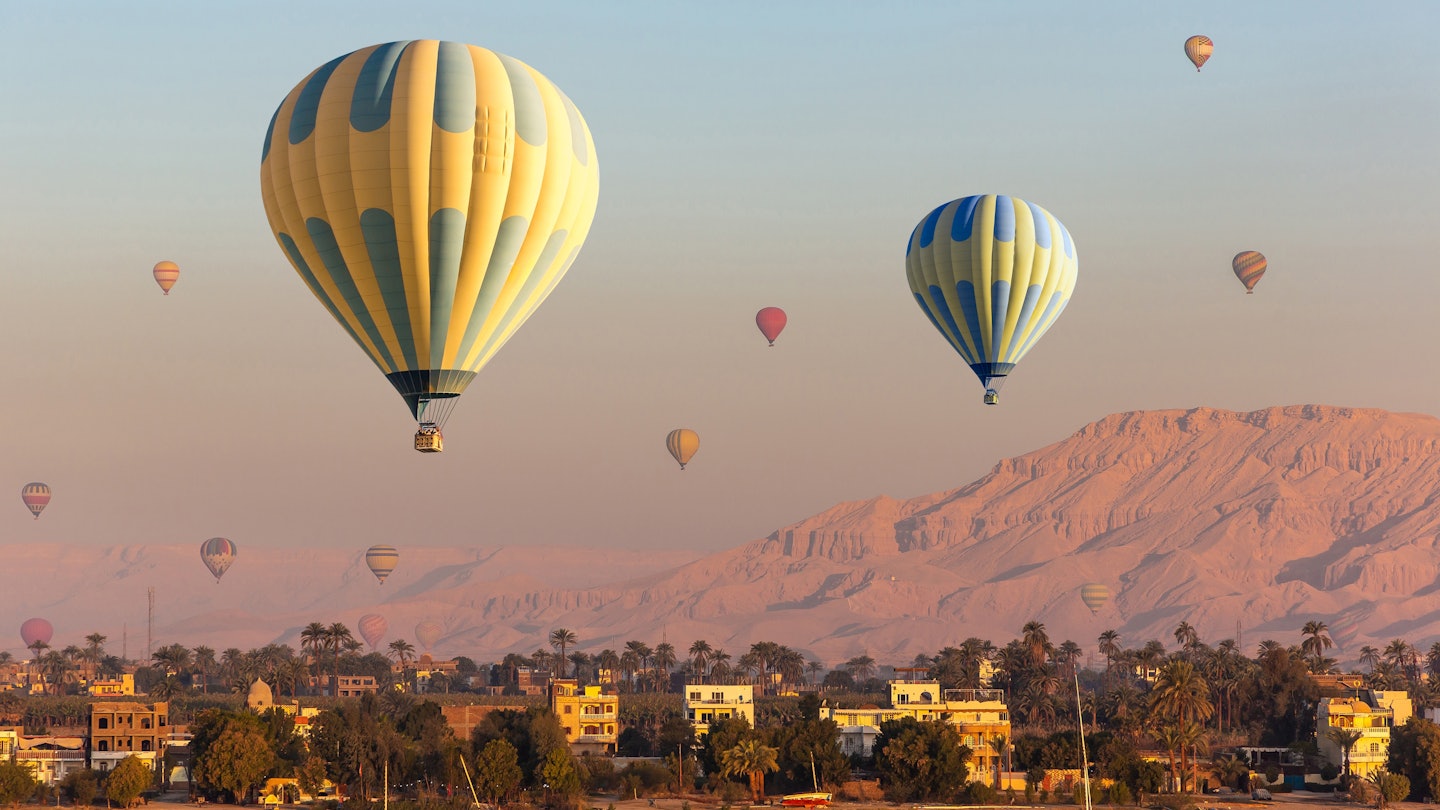
Early birds go ballooning at dawn on the east bank of Luxor, one of Egypt’s most visually exciting destinations. Sergii Figurnyi/Shutterstock
Luxor, with its painted tombs and temples, a busy stretch of Nile and a sky full of balloons, is one of Egypt’s most visually exciting destinations. When the sun sets across the necropolis of Thebes, there are few who can resist its magic. But it’s not only what you can see that enchants in Luxor – it’s also what you can hear. Pause for sundowners at a Nile-side café and listen to the sounds of this Upper Egypt city and you’ll hear the whisper of wind as it connects ancient with new, land with water and the desert with the sown.
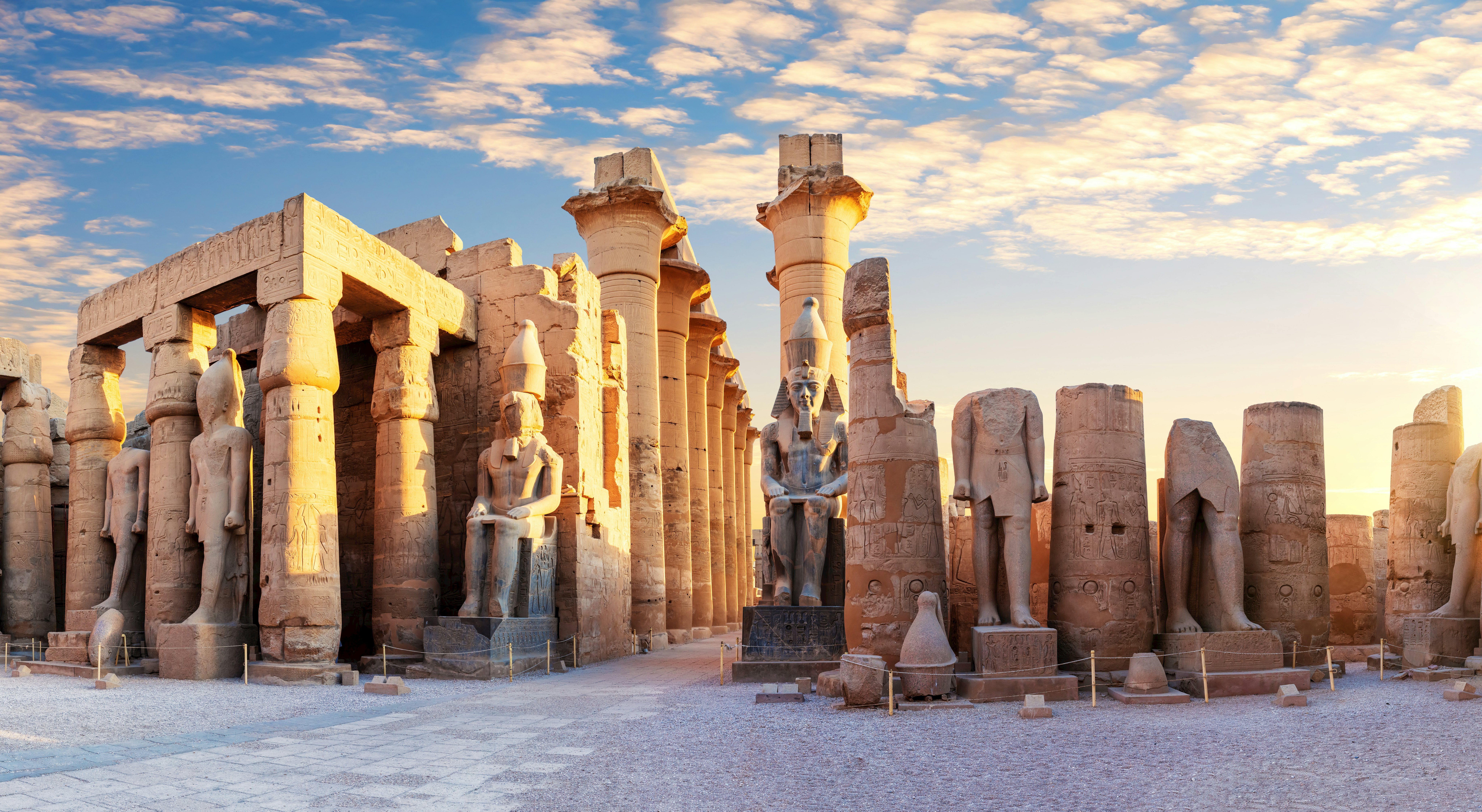
1. Descend into the afterlife in the Valley of the Kings
Split by the Nile, Luxor is spread across the more urban ‘east bank’ (with fine temples and most visitor amenities) and a rural ‘west bank’ – burial site of New Kingdom pharaohs. Be sure to visit both. Tickets to all main sites in Luxor can be booked online at www.egymonuments.com.
There’s a certain awe involved in visiting the star-chambered tombs of the Theban necropolis. It was here in the desert escarpment that Egypt’s pharaohs evoked the afterworld through the complex design and enigmatic decoration of their hidden burial chambers. When some small detail breaks through the abstraction – a sandal worn by a king (gods go barefoot), a green-necked duck identifiable as a mallard, a sheer piece of cloth covering the bronzed arm of a queen – the ancients come alive, perhaps not in the way they intended, but communicating nonetheless from beyond their pillaged graves.
Planning tip: A Luxor Pass, purchasable in person in euros or US dollars (cash only) at Karnak and the Valley of the Kings, offers savings if visiting multiple sites.
2. Drift heaven-bound above the necropolis of Thebes
Look out of your hotel window at dawn and you’ll find the west bank daubed with splashes of color as early birds go ballooning. It’s a hypnotic spectacle, watching each craft loom above the ruined temples below, seeking space in a sky full of baskets. But watching is one thing; flying is another, and it can be unnerving clambering into the basket knowing the pilot has no control of the steering. Once above the ground, though, balloon flight comes into its own. There’s the occasional dragon’s breath of fire keeping the craft afloat, but otherwise the soaring upwards is magically silent. Once at altitude, the view – of the Nile minimally fringed by farms and overwhelmed by the great desert beyond – helps set human endeavour (of ancient necropolis and modern cityscape) within the bigger context of nature.
Although the launch site is on the west bank, ballooning companies, such as Alaska Balloon collect guests from their hotels on either side of the Nile and, in a triumph of grassroots logistics, ferry them towards the correct balloon at the correct time.
Planning tip: Flights, bookable the day before departure, take off in two shifts – most popularly at dawn and, at a discounted fare, one hour later.
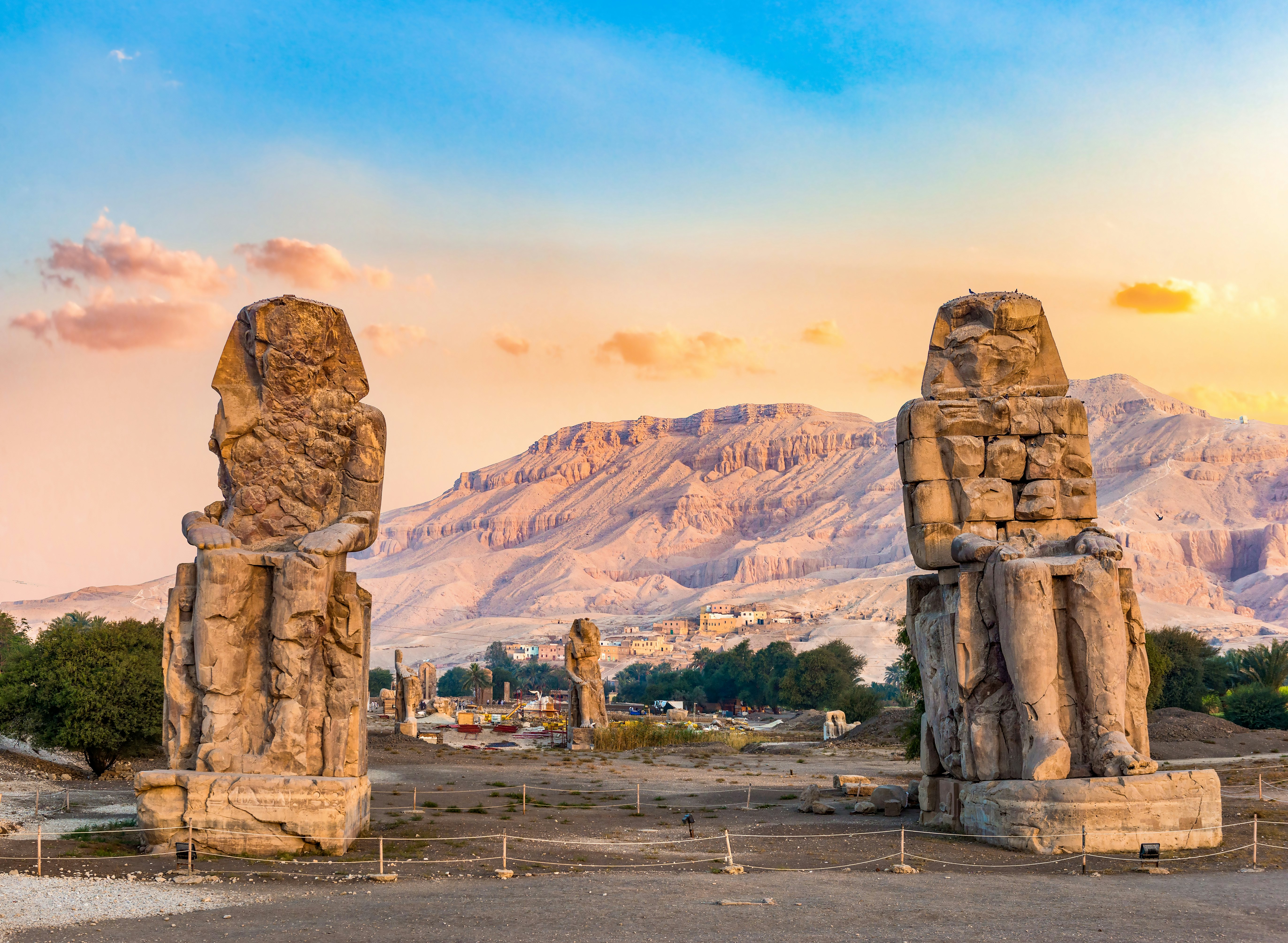
3. Cycle the fertile fringe between the living and the dead
Scattered across the plain between the Nile and the Theban necropolis lie the mortuary temples of New Kingdom pharaohs. In various states of ruin and repair, these richly decorated compounds, dedicated to the fine art of dying, make rewarding places to visit. To avoid the whole experience being dominated by ancient history, though, hire a bike from Mohammed Setohe Bike Rental (+20 106 8281315) and enjoy the rural views en route. Pedalling past the Colossi of Memnon or arriving at the Mortuary Temple of Queen Hatshepsut by bike helps in appreciating the scale of the pharaonic vision and the enormous enterprise wrapped up in the anticipation of eternity.
Planning tips: Don’t forget to swing by the Antiquities Office, soon after passing the Colossi of Memnon, to buy temple tickets. Medinat Habsu and the Ramasseum make good detours but avoid cycling to the Valley of Kings: it’s a shadeless slog to reach the valley entrance.
4. Play a part in the nighttime drama of Karnak
Unfashionable? Perhaps. Kitsch, certainly! But don’t let that, nor the deeply intoned soundtrack, put you off Karnak’s nightly Sound-and-Light Show. Walking through this remarkable complex of ancient temples and statuary at night, lit to its best advantage, gives an impression of how this once-sacred ground may have appeared to those who worshipped here. Take the great Hypostyle Hall with its densely clustered, lotus-headed pillars: at night, it’s not just about the masonry – it’s also about the shadows that are thrown so long across the temple precinct they appear to have lives of their own. Join the chattering crowds outside the First Pylon (gateway) and you’ll become part of the drama – extras in a show that has been delighting visitors for decades.
Detour: While most monuments in Luxor close at sunset, Luxor Temple (3km from Karnak beside the east-bank corniche) stays open longer. Another triumph of the night, its giant statues of Ramesses II seem to glow in the dark. For daytime visits, the admission fee offers access to the pedestrianized Avenue of Sphinxes, linking Luxor Temple with Karnak.
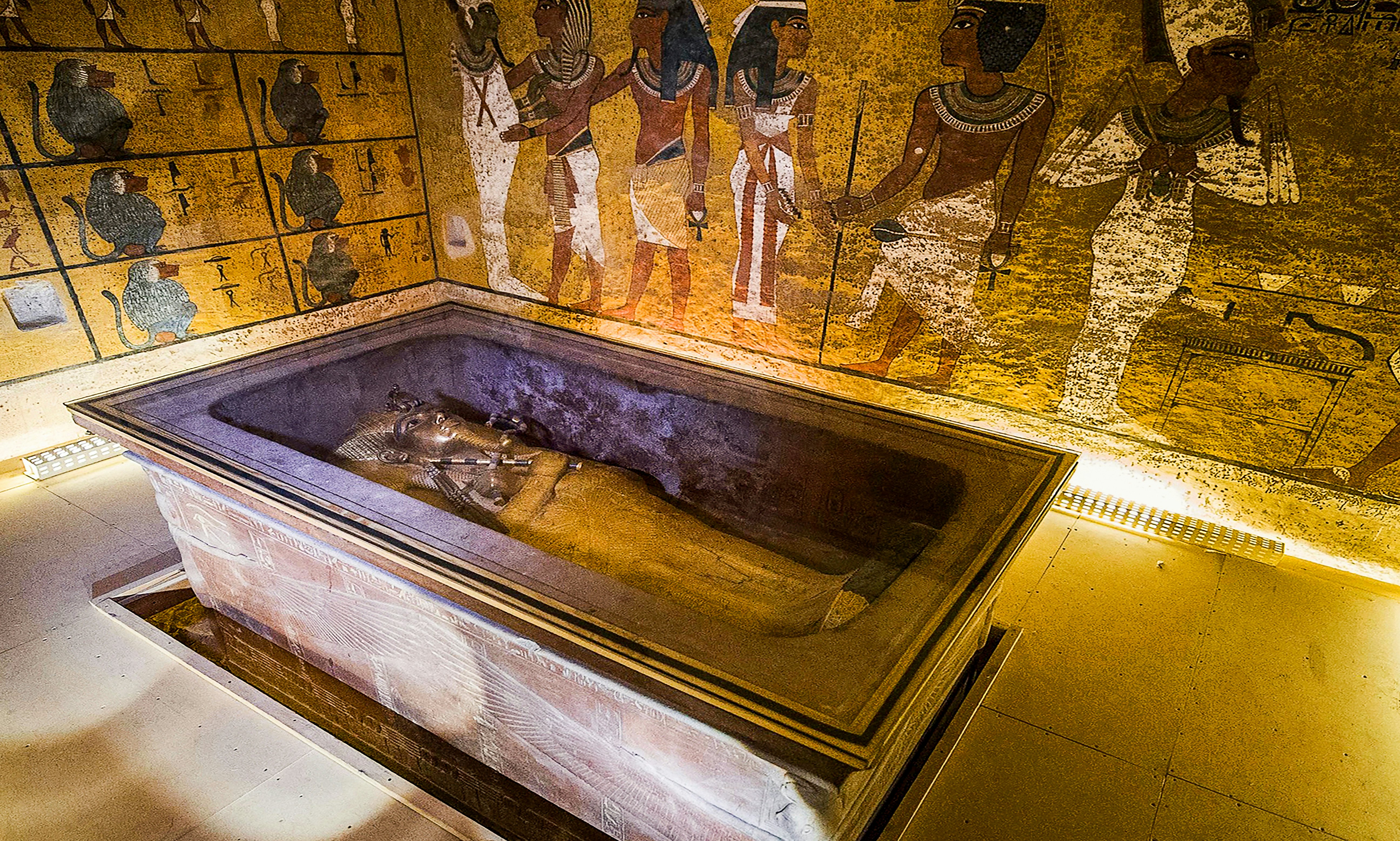
5. Learn how to wrap a mummy
There are many superb museums in Egypt but, for a niche experience, none quite compares with the tiny Mummification Museum on Luxor’s east-bank corniche. Spend time wandering around the displays of embalmed corpses and you’ll likely feel an overwhelming sense of carpe diem – not on account of the macabre but for the love of life that led the ancients to want so badly to triumph over death. Here, among the mummy wrappings, the tools for organ removal and the canopic jars of innards, there’s a hungry yearning for a continuation of all that’s precious to the human spirit, including a love of those sharing in the journey – a mummified pet cat, a revered crocodile, a sacred scarab beetle.
Detour: Walk along the corniche from the Mummification Museum, pausing at a Nile café, to the Luxor Museum. This superb modern exhibition space houses some of the best finds from the region, including many objects from Tutankhamun’s Tomb and some of Egypt’s finest sculpture.
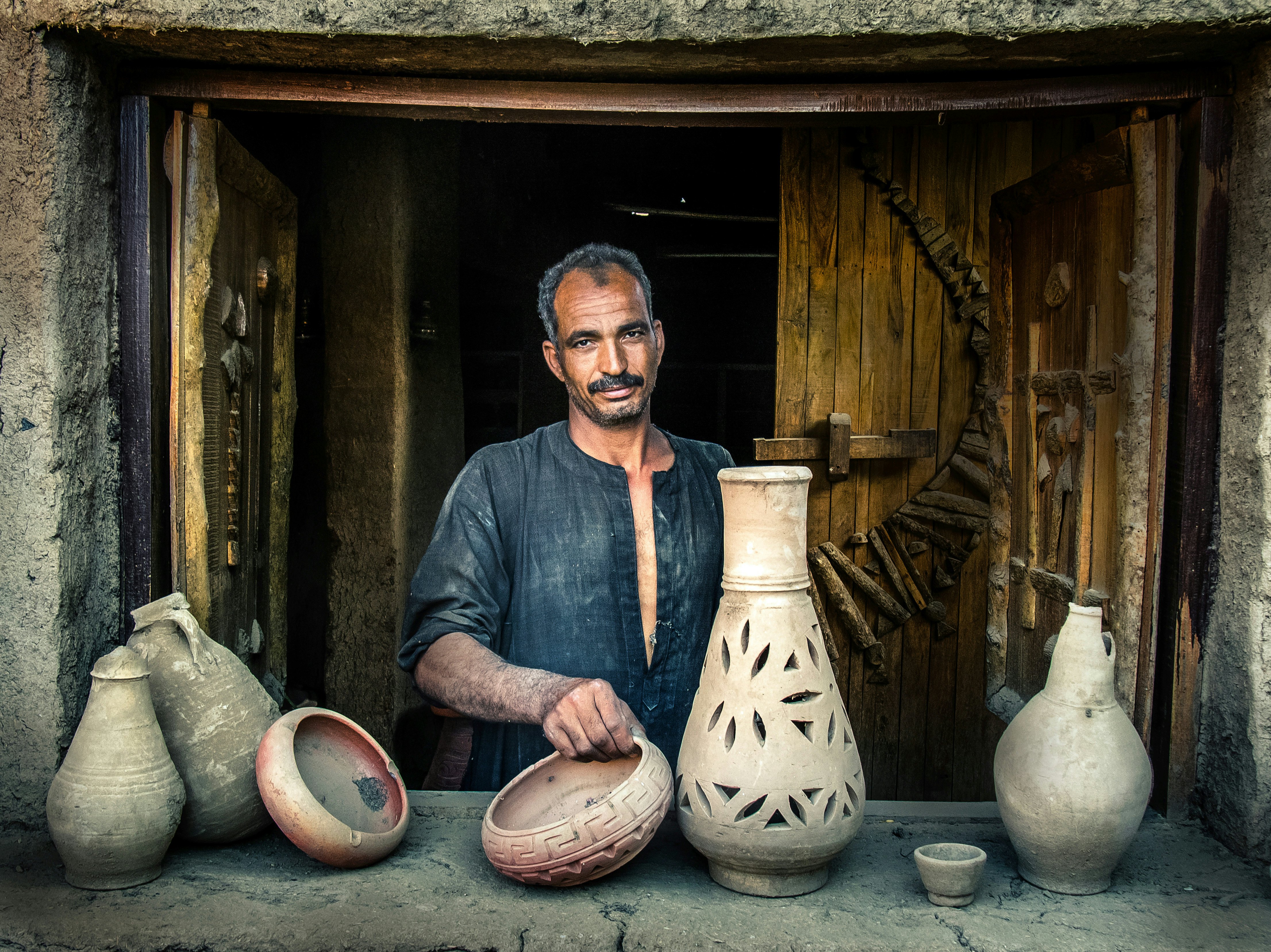
6. Throw a pot on the wheel in temple country
A pot with feet, complete with ten toes? For centuries the ancient Egyptians created cups, sporting a pair of feet, for a purpose that not even Egyptologists can agree upon. Perhaps they were used to hold offerings for the gods; perhaps they were filled with vitals for the supposed onward journey of the soul. Whatever their use, they turn up regularly in tomb digs. At the west bank Ramasseum Pottery Workshop, you can make your own version, guided by the expert hands of the proprietorial potter, and ascribe your own meaning.
Detour: If you’re interested in craft, Luxor’s west bank abounds with wonderful workshops where you can watch luminous alabaster being crafted into lamps, hand looming of textiles and papyrus papermaking. Take a tuktuk taxi and ask the driver to take you to his favorite outlets.
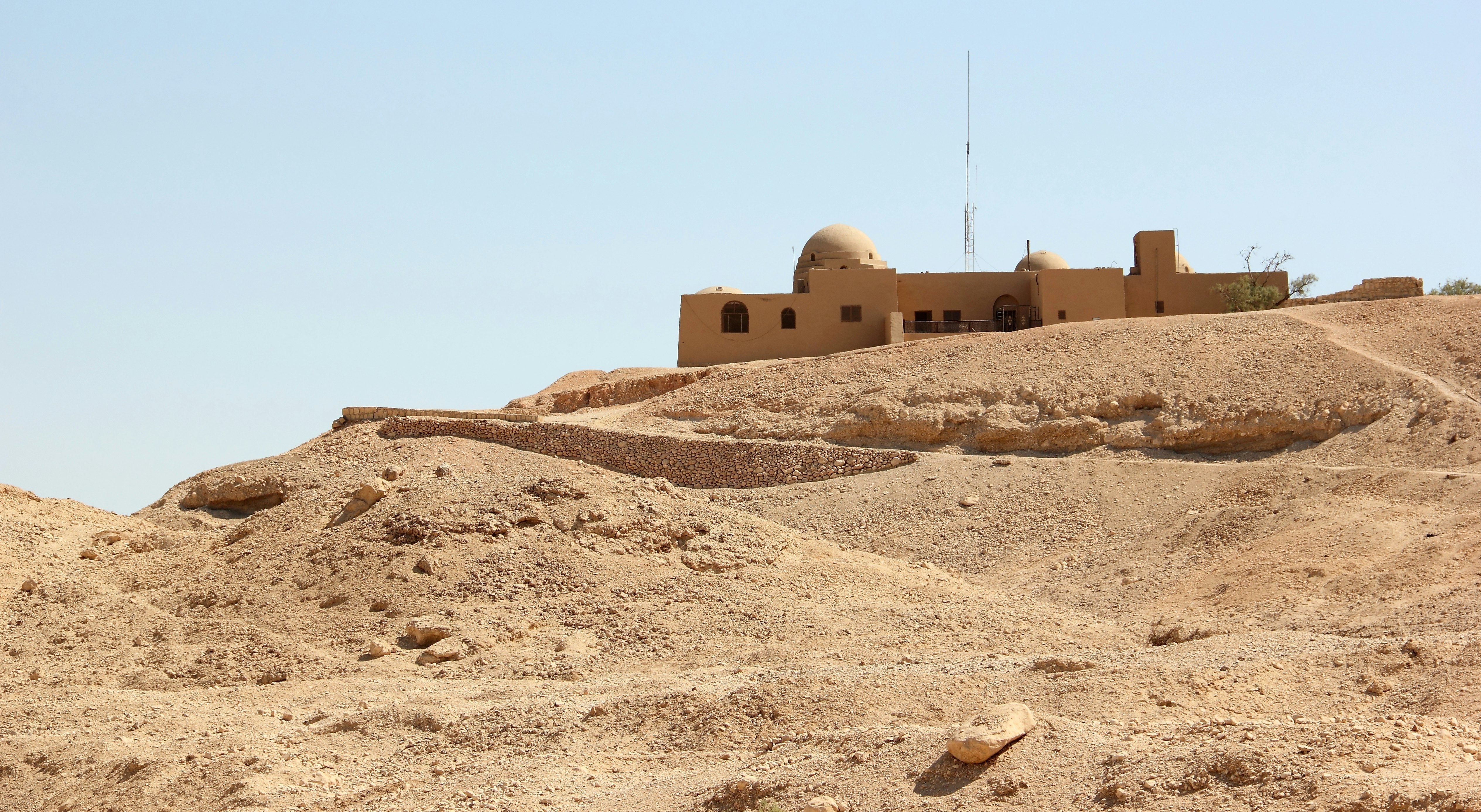
7. Relive Carter’s epic moment of discovery
‘Wonderful things!’ That was the reply of Egyptologist Howard Carter when asked by his eager sponsor what he could see behind the bricked-up wall of King Tutankhamun’s famous tomb. The young king died suddenly and his tomb was meagre in every way – other than the fact that it had escaped notice since it was sealed and contained the legendary treasure that made Carter one of the most celebrated archaeologists in the world. Visiting Carter’s House, on the edge of the Valley of the Kings where he toiled in vain for season after season in search of a big find, is a touching way to come close to the excitement of his discovery in 1922. Lucky? Perhaps. But Carter’s luck was earned the hard way, as evidenced by the objects in his spartan home.
Planning tip: Spare time to enter the faithfully reconstructed Tomb of Tutankhamun in the garden. Accessible for those with mobility issues, it represents an alternative way of enjoying an ancient tomb without contributing to its damage – a concern for most of the tombs in Luxor.
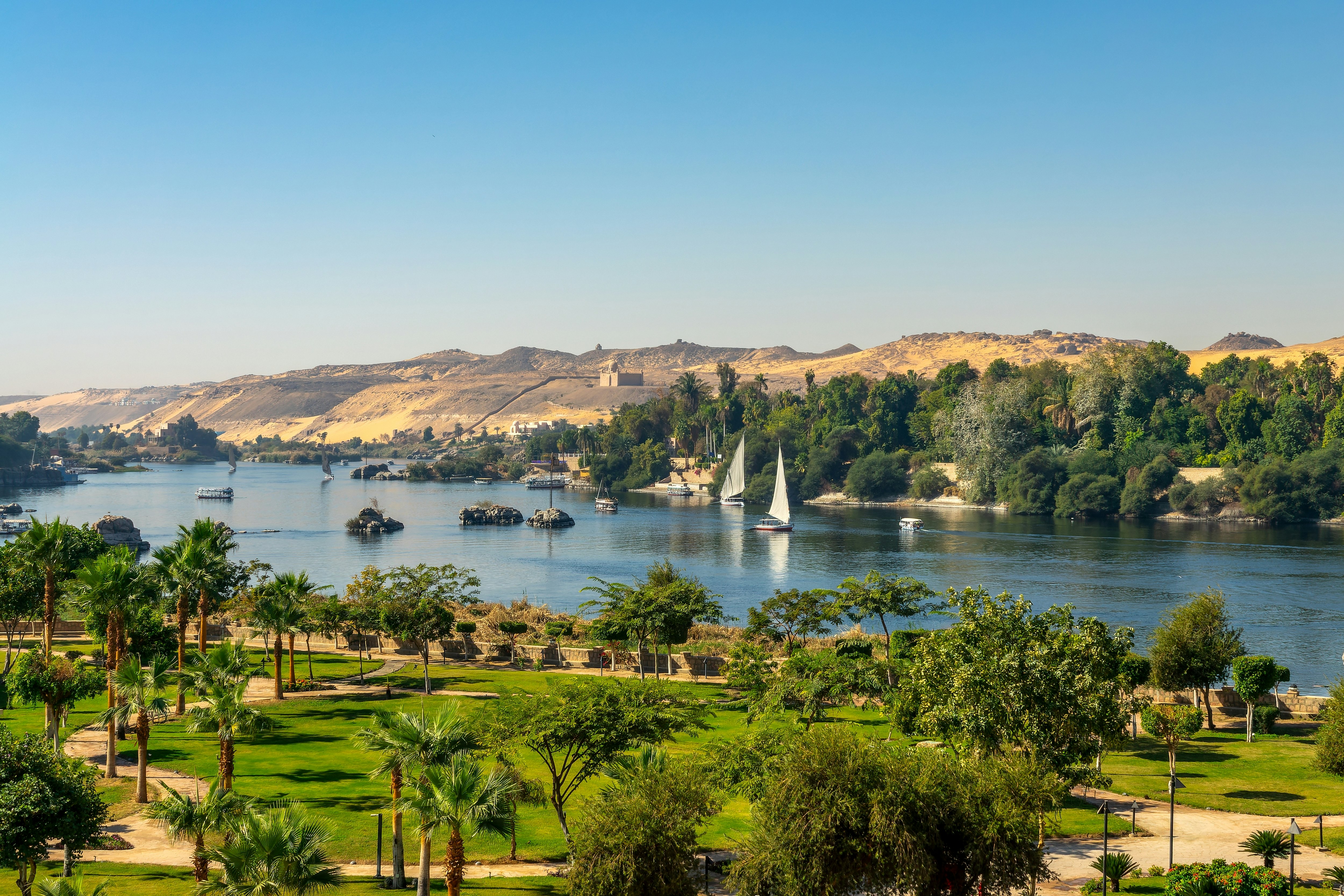
8. Sail into the sunset on a Nile felucca
‘Sailing into the sunset’ sounds like a cliché but in Luxor such is the play of light on water the phrase is hard to beat. Feluccas, Egypt’s single-mast riverboats, have been plying the waters of the Nile ever since artists commemorated sail power on the walls of Queen Hatshepsut’s mortuary temple and now no trip to Luxor is complete without at least one trip on the water. Although it’s theoretically possible to sail at any time of day, the wind picks up in the afternoon. When the sun starts to sink, the water floods with color, bouncing off the sails of passing boats.
Planning tip: Although billed as a ‘sunset’ cruise, the best time to be on the water is in fact one hour earlier, when the reflection in the water is at its strongest. Boat rides can be booked from either bank of the Nile where the felucca owners (such as Captain Ali +20 106 2480567) will find you, before you find them.
















